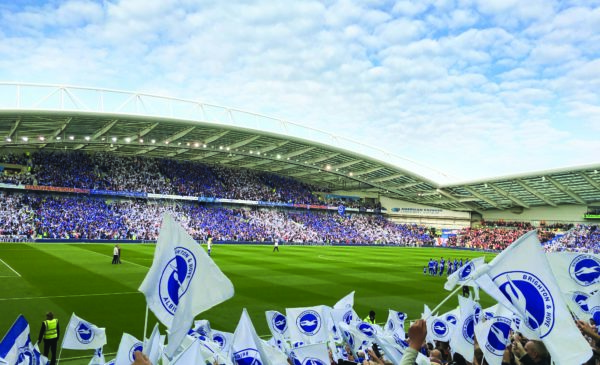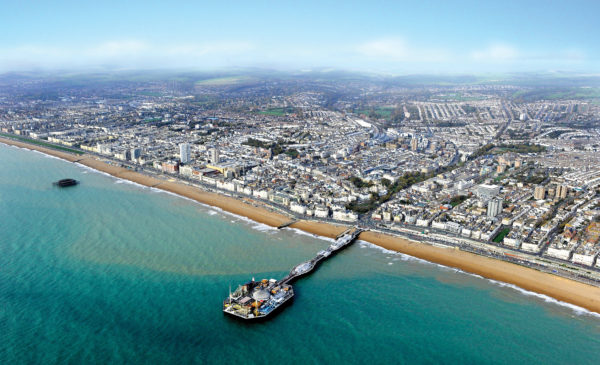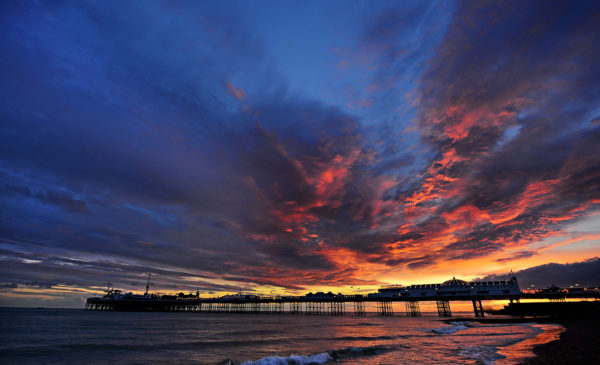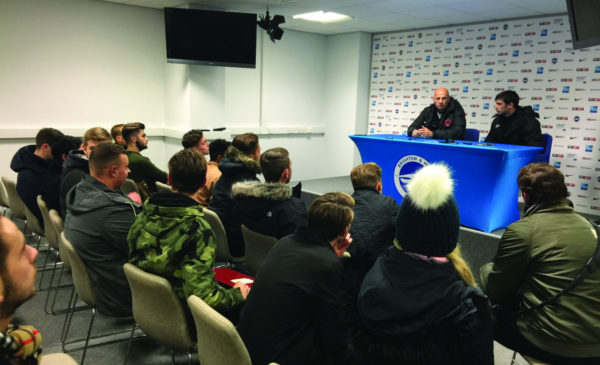They do not make stadiums like they used to. Nowadays, more and more teams are trading up their supposedly old and dated grounds for new ones. For some teams it works well, but for some they still haven’t made it their home yet. But for some, they’ve stayed in their ancestral homes.
While the first two parts in the series reviewed a total of six stadia that no longer exist, part three will now review classic football stadia around the country that still stand today. Rather than be knocked down for something new, these three teams have stuck by their ancestral homes and continue to make history in them.
Stadium One: Fratton Park, Portsmouth FC (1899-Present)
Nicknamed ‘The Old Girl’, Fratton Park boasts the stat of being the only stadium in English football that is not situated on the mainland of the United Kingdom. It is situated on the island of Portsea where the city of Portsmouth sits. Perhaps Fratton Park has one of the most iconic main entrances in football. Of course, the tutor façade at the end of Frogmore Road.
A number of records have occurred in this stadium also with the highest scoring match in Premier League history. Pompey 7-4 Reading on 29/Sept/2007 as well as being the first club in football to have a floodlit game which was against Newcastle United in 1956.
Also, Portsmouth’s one and only season in the UEFA Cup (2008/09), saw Italian giant’s AC Milan travel to the south coast. The fans made a cauldron of noise and they almost humbled Milan but Ronaldinho and Filippo Inzaghi both scored late on to deny a famous win. Despite this, Ronaldinho famous said ‘one of the best atmospheres in world football’. Something the fans will hold onto forever.
Furthermore, Jose Mourinho, also claimed ‘It’s not Portsmouth’ when referring to the Old Trafford atmosphere when he was Manchester United coach.
In recent years, Portsmouth’s ground was Dubbed Fortress Fratton by fans due to away sides finding it so difficult to go and get a result there. This name ‘Fortress Fratton’ was even more poignant in recent years when Portsmouth went 12 months in the league undefeated from April 2019 to April 2020.
It’s been debated many times about moving away from the Fratton Park site, but the recent work on the stadium which included new roof cladding and installing floodlights on the oldest south stand. Not to mention the recently approved plans by the city council to redevelop the away end (Milton End), it appears that Portsmouth are settling in for the foreseeable future.
Embed from Getty ImagesStadium Two: Goodison Park, Everton FC (1892-Present)
Nicknamed ‘The Grand Old Lady’, Goodison Park has been home to Everton FC for over 100 years. The first football game here was against Bolton Wanderers which ended in a 4-2 win. Two years later, the FA Cup final was hosted here. Notts County were victorious over Bolton Wanderers.
But believe it or not but it wasn’t a football event that was first hosted at Goodison Park but an athletics event. Upon opening the stadium had an athletics track but this was subsequently removed during 1909 when the Goodison Road stand was constructed, by well-known architect Archibald Leitch.
After this two-tiered stand was completed, Goodison Park was considered the best British ground. The stadium remained unchanged until 1971 when the aforementioned Goodison Park Road stand was replaced by a three-tiered stand.
Goodison Park was one of the stadia selected for the 1966 World Cup, one of the more frequently used stadiums, a total of five games were played including West Germany’s semi final against the Soviet Union, which of course West Germany won, to set up the England vs Germany final.
The north-western based club were the first club in the country to have a scoreboard installed in their ground but too small to include player names so shirt numbers were displayed initially. Furthermore, the ground has also been used for a BBC film.
Everton and Goodison Park have a rather unfortunate stat, that legends Dixie Dean and Harry Catterick both died at the stadium. Both from heart attacks within five years of each other, 1975 and 1980, respectively.
A stadium with so much history, it is a shame that over the last decade or so, Everton have been looking at a move away, towards the Kings Dock and on the city of Liverpool waterfront.
Embed from Getty ImagesStadium Three: Hillsborough Stadium, Sheffield Wednesday (1899-Present)
The stadium was opened in 1899, in which the very first game was a 5-1 victory against Chesterfield. During this time, the stadium was called the Owlerton Stadium due to the location of the stadium within Hillsborough. It did not take on the name of Hillsborough Stadium until expansion developments during 1914 were completed.
The ground was used as one of the stadiums for the 1966 FIFA World Cup, it was used a total of four times with all of Switzerland’s group matches being played there as well as the Germany vs Uruguay Quarter final.
Perhaps though, Hillsborough is most famous for the disaster in 1989 when Liverpool and Nottingham Forest visited for a FA Cup semi-final clash which resulted in the deaths of 96 Liverpool fans due to a number of factors which include poor police control and inadequate safety measures. The game was abandoned within six minutes.
It is this incident which resulted in the creation of the Taylor Report. It meant that all stadia in English must become all-seaters and any perimeter fences were to be removed.
This subsequent rule meant Hillsborough went through renovations during the 1990s to become safer and avoid incidents like the Hillsborough disaster moving forward. Once again, Sheffield Wednesday’s home was selected for another major international tournament, the 1996 European Championship. The stadium hosted all three of Denmark’s group games.
Safety measures have very much plagued Sheffield Wednesday’s home ground since the 1980s and because of this their overall capacity is reduced, there are plans to massively improve the ground but as of 2020 these have been delayed.
If you were to visit the stadium, you can find a memorial to the Hillsborough disaster, across the river from the south stand.
Embed from Getty Images







